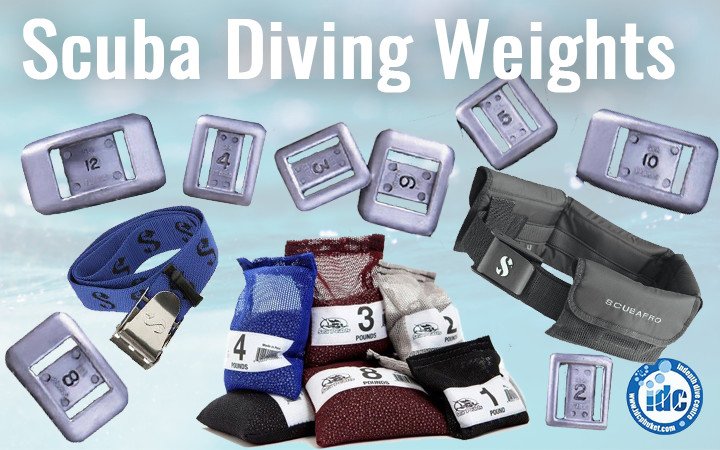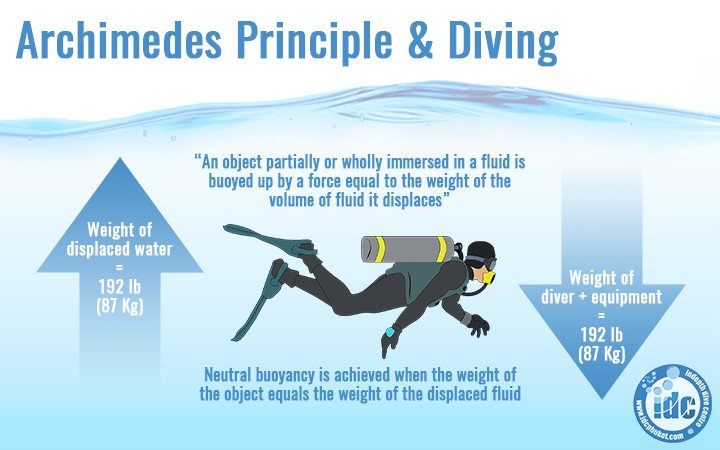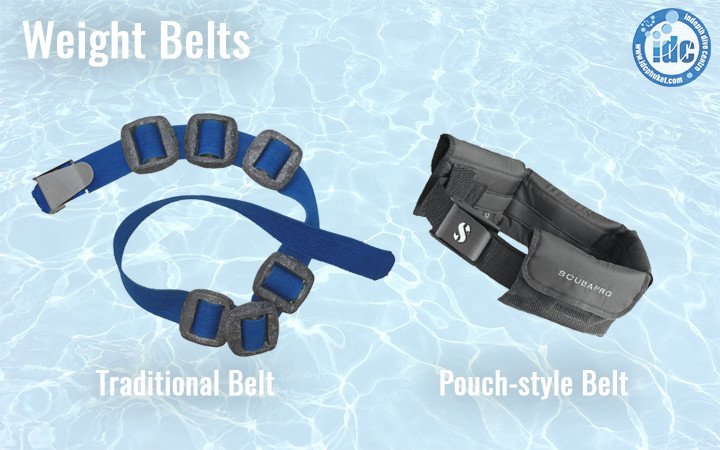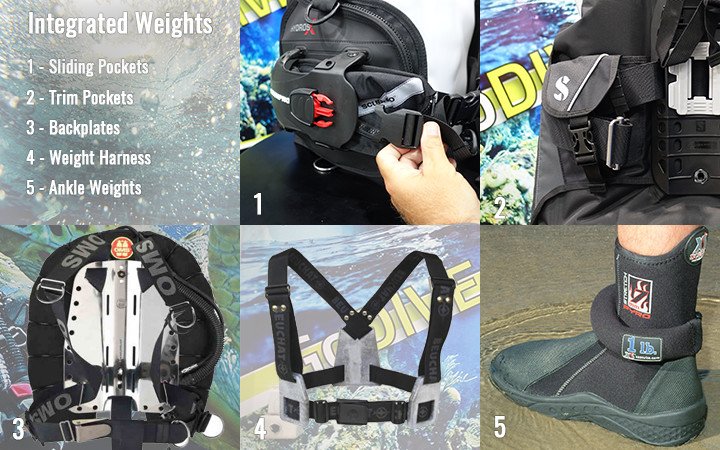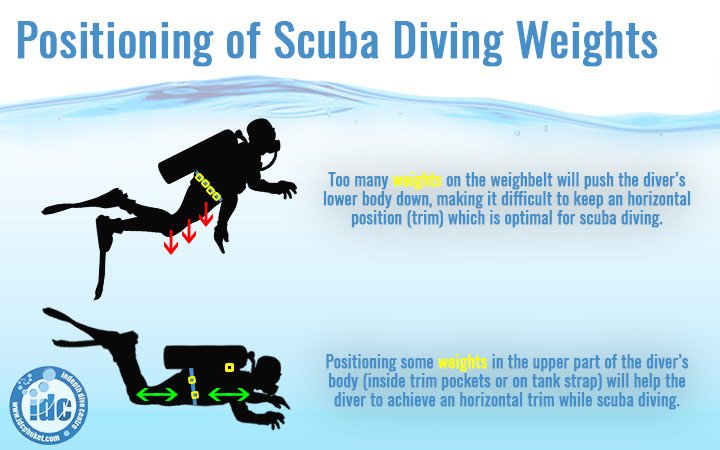Scuba Diving Weights
Scuba Diving Weights. Nearly all divers need to dive with some sort of quick-release weight system in order to offset the buoyancy characteristics of both themselves as well as their scuba equipment. Without weights, it would be impossible for many of us to descend underneath the surface of the water, let alone stay there. In this blog, we’ll have a look at the physics behind buoyancy, consider some of the various styles and sizes of weights, the ways in which weights can be worn and finally have a look at quick-release mechanisms which allow weights to be dropped in an emergency.
As always, this is not exhaustive, there is a lot of variety out there when it comes to how you wear weights. If you have a question about a particular piece of equipment you are using, thinking about buying, or would like to work on your own weighting and buoyancy by completing a Peak Performance Buoyancy Specialty Course with one of our instructors, please send us a message here.
Archimedes Principle
During your Open Water Course, you would have been introduced to the concept of buoyancy and likely found this to be the trickiest skill to master. Buoyancy, however, is determined by physics. Archimedes Principle states that an object partially or wholly immersed in a fluid receives a push up by a force equal to the weight of the fluid it displaces. This sounds a lot more complicated than it needs to be. In effect, for divers in the water, buoyancy is like a game of tug-of-war.
A game of balance – positive & negative buoyancy
On the one hand, you have the objects which make you float. This includes most of your scuba equipment; wetsuits, booties, some models of masks and fins float. The amount of air in your buoyancy control device will also determine whether it floats or not. Most people themselves also tend to float; those with large lung volumes or who carry a little extra padding, tend to be more buoyant.
On the other side of the equation, you have the things that make you sink. Depending on what type of scuba tank you are using and whether it is made from steel or aluminium, full or near empty, your tank could fall into either category so for the most part, the main component on the sinking side of the tug-of-war equation is your weights. In order to be neutrally buoyant, both sides of the equation must be balanced. For positive or negative buoyancy, you need to have an imbalance and to have more on one side of the equation than the other.
Buoyancy weight check
You will hopefully remember from your Open Water Course you did a weight check to determine the correct amount of scuba diving weights for you with the equipment configuration you were using at the time. In order to complete a weight check, on the surface, fully equipped and with a regulator in your mouth, you take a normal breath, hold it and then release all the air from your buoyancy control device. A properly weighted diver with a tank down to 50bar of pressure should float at eye level. As the diver exhales, they should be able to descend. If the diver can’t descend, they need more weight. Or if instead they sink and cannot float at eye level, they are over-weighted.
If you go a long time between dives or change equipment, we always recommend you re-perform a weight check to determine the correct amount of weights you need to dive with.
If you’re not sure how many weights you should be using, what the best placement of those weights is, or would like to fine-tune your weighting, buoyancy control, and trim you can take your Peak Performance Buoyancy speciality with us. This course only takes the one day and an instructor will work with you to optimise your weighting, comfort and control in the water.
Hard and Soft Weights
Scuba diving weights themselves come in two main styles; hard weights and the bean-bag variety of soft weights. Both styles of weight are made from the same material; lead. Lead has a greater density than most other metals meaning it is heavy for its size. Most hard, lead weights are square-shaped with two narrow vertical slits in the centre of them which allow them to be attached to the diver. Some manufacturers include a coloured rubber cover on their weights which make them slightly padded and more comfortable to wear.
Hard Weights (blocks)
Hard weights commonly come in the 2lbs, or 900 grams variety as well as a larger 3lbs, or 1.3kg version. The heavier blocks are ideal for divers wearing thick wetsuits or drysuits, requiring more weight to offset their suit’s buoyancy. Smaller hard weights, sometimes as little as half a kilogram in size, are also common and used by divers who need to fine-tune their weighting but find a larger weight too much.
Here in Phuket, we almost exclusively use the 2lbs weights although some boat operators have begun offering 1kg / 2.2lbs alternative. An advantage of these weights is that they are common everywhere. Once you know how many you need and record the amount in your logbook, it’s easy to find that exact amount elsewhere on your travels.
A downside of these weights is that they are hard. They can be uncomfortable when worn on a weight belt, particularly for divers who don’t wear much exposure protection. If dropped, these weights can damage equipment or even toes. Over time and with repeated impacts, the slits can become narrower making them difficult slide in a standard weight belt.
Soft Bean-bag Weights
Soft, bean-bag scuba diving weights are also made from lead but in the form of shot or small beads. These beads are placed inside a bean-bag and unlike the rigid, hard weights, they can flex, bend and mould to the shape of the diver so are more comfortable. A downside of these weights is that they cannot thread onto a standard weight belt, only a pouch-style weight belt. This style of weight and weight is not as common as the hard weights used with a standard weight belt. If you prefer this style, it may be difficult to find when travelling.
Weight Belts
The most basic and simple form of attaching weights to a diver is by the use of a weight belt. A weight belt is simply a belt made from nylon webbing with a buckle at one end. The buckle is available in plastic or metal. The plastic buckle is durable, however, the metal buckles tend to last longer.
With a standard weight belt, the weights simply thread onto the belt. The diver can then adjust them into a comfortable position once they wear the belt. When threading the belt, divers need to ensure they thread it correctly. The weights must sit on the outside of the belt, away from the diver, must face the right way.
Some divers prefer to use weight keepers. After finding their ideal position for their weights, they can simply thread a metal slider on top of the weight. This will prevent the weights from moving. An alternative to this however is simply to kink the weight belt when threading it through the weight by turning it 180 degrees.
Disadvantages and improvements of a traditional weight belt
Wearing scuba diving weights on a weight belt can be uncomfortable, especially for divers who aren’t wearing much exposure protection. The weights can press into the diver’s hips and back. An alternative to alleviate some of this discomfort is a pouch-style weight belt. This style of weight belt includes little pouches all the way around it, where divers can simply insert their weights.
These weight belts are easier and faster to prepare than the standard variety which also makes them an attractive option. These weight belts can be more difficult to tighten and adjust on the diver though. The position of the pouches is fixed so any adjustment normally needs to be made by moving the entire buckle. This is more difficult when compared to a standard weight belt where the weights can easily slide back and forth in order to tighten the belt.
Integrated Scuba Diving Weights
A lot of divers these days have done away with weight belts altogether and instead use an integrated weight system. Integrated weights are integrated into your buoyancy control device (BCD); where and how varies from BCD to BCD.
Quick-release sliding weight pockets
Some models of jacket BCD have sliding weight pockets on the diver’s hips. They can easily be clipped in and clipped out as needed. A risk of using this style of integrated weight pocket is that if the diver doesn’t properly slide and lock the weight pocket back in, it can easily fall out. To avoid this, some manufacturers such as Mares, have created a colour-coded system. When the weight pocket is correctly locked in, a little green arrow is shown on the outside of the BCD through a small window in the pocket. When the weight pocket is unlocked, a red arrow will show. This is a simple way for divers to visually check their weights, particularly during the buddy check.
Trim Pockets
Other BCDs include trim pockets which are found at the back of the BCD, alongside the tank. Normally trim pockets are small pouches which can hold a single weight each. The purpose of a trim pocket is to shift some of the weight the diver is wearing around their hips. This will distribute the weight more evenly to maximise the diver’s comfort in the water. Some models of BCD, such as the Aqualung Rogue BCD, actually have sliding weight pockets but instead of them sliding in towards the diver’s hips from the front, they slide up on either side of the tank, on the diver’s lower back. This style of integrated weight pocket is still easily accessed and removed by the diver whereas there is no way for the diver to reach or access the trim pockets next to their tank.
Weights on Wing & Backplate BCDs
BCDs such as the wing and backplate style include integrated weight pockets on the harness. These are easily clipped in and out, although are usually positioned closer to the backplate and further back around the diver’s hips than what the weight pocket placement on jacket-style BCDs offers. Generally, there are fewer options for carrying more weights on a wing and backplate BCD. Consequently, some divers choose to dive with a stainless steel backplate heavy enough to offset the need to carry weight. Another consideration for divers wearing a harness BCD with a crotch strap is that they cannot use a weight belt. The crotch strap effectively entangles the weight belt in an emergency situation where the diver tries to drop the weights. For more information about BCD styles and the benefits of each, click here.
Weight Harness
Other options for wearing scuba diving weights include a weight harness, worn like a small jacket underneath the BCD. This weight configuration is a favourite by divers who need carrying a lot of weight, such as those wearing drysuits.
Ankle Weights
Divers wearing dry suits can also be prone to buoyant ankles. As such, small donut-shaped beanbag weights which clip around the diver’s ankles are available. Sidemount divers using purpose-built sidemount BCDs store their weights in specialised weight pockets located on the inside of the BCD, running down the diver’s spine.
The downside with all of these styles of weight configuration is that none of them can be dropped in an emergency, which makes them unsuitable for novice divers.
The positioning of Scuba Diving Weights
The options for carrying weights and where vary significantly. This is because different divers have different shapes and different buoyancy characteristics. As such, they need options for distributing their weights in order to achieve perfect trim and optimal comfort while diving.
With weighting, it is not just the amount of weights the diver is carrying which determines their buoyancy control, but also the positioning of the weights which affects their trim. Ideally, most of your weights should be around the front of your hips, pulling you into the correct trim position. For divers carrying a lot of weights though, this can be too much and tilt them out of trim. In these instances, trim pockets at the back of the diver are useful.
For divers on sidemount and twin-set equipment configurations, weight may need to be placed lower down on the diver. This is to offset the weight of additional first stages and the manifold which make the diver’s upper body heavy.
How to ensure the best positioning of the weights, and why
The easiest way to see how well, or not so well, your weights are positioned is to simply hover in the diving position and without moving your arms or legs. A perfectly weighted diver with a good weight distribution should be able to perfectly hover in trim, without having to work to stay there. If you find you are tipping face down, you may need to move some weight further down on your body or adjust the height of your tank.
Divers whose feet drop to the bottom are usually over-weighted so need to remove some weight. A diver who rolls to one side or another probably has an imbalance in their weight distribution. This needs to be corrected in order to balance them in a comfortable trim. Identifying exactly how much weight you need and where to put them can involve a bit of trial and error. To err on the side of caution, many divers choose to dive overweighted. This, however, makes them less streamlined because they’ll need to add more air to the BCD to counter their weight. Divers also need to work harder to propel themselves through the water with all that weight which means they will often use more breathing gas.
The easiest way for you to fine-tune your weighting, buoyancy and trim is by spending a day with an instructor, making small adjustments and trialling different weight options. You can easily do this on your Peak Performance Buoyancy Course and it will set you up to be more comfortable on your future dives.
Quick Release Weight Systems
As recreational divers, we learn on our Open Water Course to drop our scuba diving weights in an emergency. An emergency might include a BCD malfunction by which the diver is struggling to establish positive buoyancy on the surface. With some scuba training agencies, we learn to drop our weights when making emergency out-of-air ascents without our buddies. Either way, if there is a problem preventing you from becoming positively buoyant on the surface, or even from reaching the surface, you need to be able to quickly and easily release and drop your weights. As discussed above, without weights most people and most pieces of equipment are naturally buoyant. Dropping weights is an effective and easy way to imbalance the tug-of-war equation and establish positive buoyancy.
Quick Release Weight Belts
For divers wearing a weight belt, a weight belt always has to be worn as a ‘right-hand release’. This means that when you put the weight belt on and fasten it, your left hand holds the buckle. This way, during ascents or whilst trying to orally inflate your BCD on the surface, your left hand is always free to operate the low-pressure inflator. Your right hand is then used to release and drop your weight belt. Wearing your weightbelt in reverse means your left hand has to be in two places at once which is impossible. This only adds to the stress of the diver and in task overloading them.
Quick Release Weight Pockets
With quick-release integrated weight pockets, you simply slide them out, in a fast pulling motion and let them go. Usually, this method of weight release is a lot faster and easier than trying to drop a weight belt which can take longer to open and the once freed and dropped, can catch around the diver’s fins and ankles if not dropped far enough away from them.
Final Considerations – Scuba Diving Weights
As with any equipment purchase, when you are considering what weight options will work best for you, we encourage you to come in and do some diving with us and try out different options in the water to find what works best for you. When selecting a weight system, you want something which is primarily comfortable but which can hold the number of weights you need to dive with and something you can easily access and release in an emergency.
When considering new equipment, you can even combine trying some equipment with a Peak Performance Buoyancy Course to help you fine-tune your weighting, buoyancy and trim. If you are unable to get to us, we are still happy to help so if you have any questions, please send us a message here.



